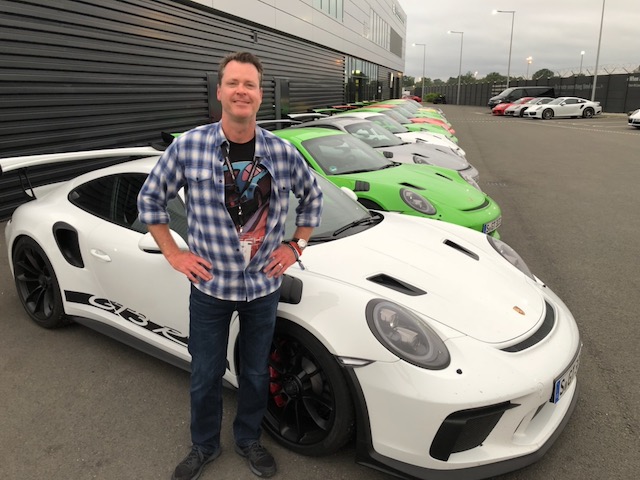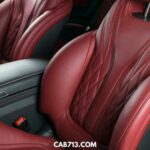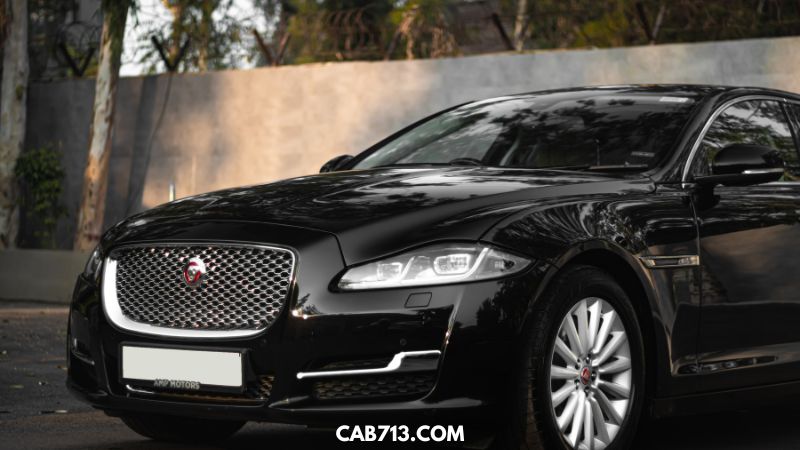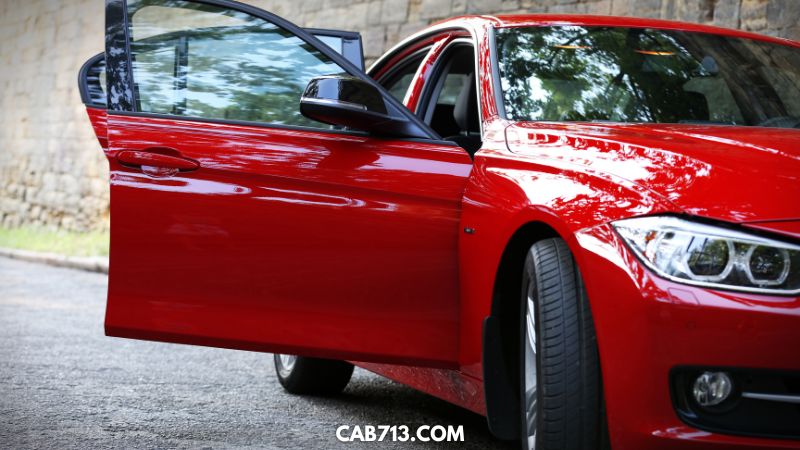Introduction
A long while back I owned a 1995 BMW 328IS. I had configured this exact car on the BMW website, but could not afford a new one. (I never buy new cars, but it’s nice to dream.) A short while later I wondered into a dealership that had a used one that was the exact spec I’d built. Twenty-four hours later and that car was mine!
I loved the wheels and purchased some BMW wheel cleaner to make sure they stayed perfect. The first time I used it, the wheels ended up with small black dots all over them. I had plenty of experience cleaning wheels, but was interested in using a product that would make the process easier. I was heartbroken, and angry that the product specifically designed by BMW was the reason.
I reached out to BMW and they quickly responded that the issue was not wetting the wheel before spraying the cleaner on. (as in the directions) To resolve this issue, I could use a very mild paint abrasive to remove the spots. I had some convertible plastic window polish that I used which had a slight amount of grit to it. It removed the spots quickly, and I’ve always followed instructions since that event.
There are thousands of products out there to help make the job of cleaning your car easier. These products can also do great damage when not used properly. Here’s a few issues to pay attention to keep something like this from happening to you.
Cleaning Practices To Avoid Damage To Cars

We all know how difficult it can be to keep our cars looking clean and new. Between driving in the rain, snow, and sun – not to mention dealing with the occasional spill or scratch – it’s no wonder our cars often end up looking less than perfect. But there are some things you can do to help keep your car’s paint looking its best.
Some cleaning practices can actually damage cars. Harsh chemicals can strip away paint and protective coatings, while abrasive scrubbing can scratch surfaces. It’s important to be careful when cleaning your car to avoid doing any irreversible damage.
Here are some things to avoid:
Harsh chemicals
Many household cleaners are too harsh for car surfaces. They can strip away waxes and sealants, leaving the paint unprotected. When cleaning the outside of your car, stick to mild soaps and avoid using anything with bleach or other harsh chemicals.
Abrasive scrubbing
Scrubbing too hard with a brush or sponge can scratch the paint. When washing the outside of your car, use a soft cloth or sponge and be gentle.
High pressure washing
High pressure washing can also damage your car’s paint. If you wash your car at home, use a low pressure setting and hold the wand at least 12 inches away from the surface. Better yet, take it to a professional car wash that has soft cloths or brushes.
Bird droppings
Bird droppings are acidic and can eat away at your car’s paint if left on for too long. Be sure to clean them off as soon as possible.
Tree sap
Tree sap can also damage your car’s paint if it’s not removed in a timely manner. Use a soft cloth or sponge to gently remove it. If it’s stubborn, you can use a mild soap or rubbing alcohol. Never use anything abrasive, like a wire brush.
Road salt
Road salt is corrosive and can damage your car’s paint over time. Be sure to wash it off as soon as possible.
UV rays
Ultraviolet (UV) rays from the sun can fade your car’s paint over time. Park in the shade whenever possible, and wax your car regularly to protect the paint.
By following these tips, you can help keep your car’s paint looking like new for years to come!
Common Challenges
One common challenge is people not knowing that road salt is corrosive and can damage paint over time. Another is people not knowing that UV rays from the sun can fade paint. Both of these challenges can be easily avoided by taking some simple precautions.
For example, always wash your car off after it’s been exposed to road salt. And, try to park in the shade whenever possible to protect your car’s paint from UV rays. Regularly waxing your car will also help keep the paint looking like new.
By following these tips, you can avoid common challenges that people face when it comes to keeping their car’s paint looking good as new.
Supplies Needed to Clean The Car Properly
1. Soap
You will need car soap to clean the car. Choose a soap that is specifically designed for cars and does not contain wax or other polishing agents.
2. Water
You will need to use clean water to rinse the soap off the car. If you have access to a hose, that is ideal. Otherwise, you can use buckets of water.
3. Sponges
You will need two different types of sponges – a soft sponge for washing and a scrubby sponge for tougher stains.
4. Towels
You will need towels to dry the car after you wash it. Choose lint-free towels so that you do not end up with towel fibers on the paint surface.
5. Vacuum
You will need a vacuum cleaner with an attachment specifically designed for cleaning cars. This will help you remove dirt and debris from hard-to-reach areas like under the seats.
6. Wax
Wax helps to protect the paint and gives the car a shiny finish. Avoid using waxes that contain abrasives, as these can damage the paint. Choose a quality wax that is designed for use on cars. Follow the instructions carefully to avoid damaging the paint.
7. Wheel cleaner
You will need a wheel cleaner to clean the wheels and tires. Choose a cleaner that is safe for the type of wheels you have.
8. Window cleaner
You will need window cleaner to clean the inside and outside of the windows.
When cleaning your car, avoid using harsh chemicals or abrasive materials that could damage the paint or other surfaces. Be sure to read the labels on all cleaners and follow the instructions carefully. In general, it is best to err on the side of caution and use gentle cleaners whenever possible.
9. Polish
Polish helps to protect the paint and gives the car a shiny finish. Avoid using polishes that contain abrasives, as these can damage the paint.
10. All-purpose cleaner
An all-purpose cleaner can be used for cleaning the dashboard, upholstery, and floor mats. Avoid using cleaners that are too harsh, as they can damage the surfaces of your car.
Steps In Cleaning Car
Now that you have gathered your supplies, you are ready to start cleaning! Follow these steps for a sparkling clean car:
1. Start by vacuuming the interior of the car to remove any loose dirt and debris. Pay special attention to the seats, floor mats, and carpeting.
2. If there are any floor mats or seat covers that can be removed, take them off and wash them separately.
3. Use the soft sponge to wash the exterior of the car with soap and water. Start at the top of the car and work your way down.
4. Rinse the soap off the car with clean water. If you are using a hose, be sure not to hold it too close to the car to avoid damaging the paint.
5. Dry the car with a clean, soft towel.
Now that you have followed these steps, your car should be clean and sparkling! Remember to avoid using harsh cleaning chemicals or abrasive materials, as these can damage the car’s finish. With a little care and attention, your car will stay looking great for years to come.
Why You Should Disinfect Your Car
Most people don’t think about disinfecting their car, but it’s actually a good idea to do so. Here are a few reasons why:
1. You spend a lot of time in your car.
You probably spend more time in your car than you do anywhere else, so it stands to reason that there are germs and bacteria lurking in there. Disinfecting your car will help to keep you healthy and free of illness.
2. Your car is full of nooks and crannies.
All those nooks and crannies in your car are the perfect breeding ground for germs and bacteria. A good disinfectant will help to kill these off, keeping your car cleaner and healthier.
3. Your car is full of dirt and grime.
Even if you clean your car regularly, there’s bound to be some dirt and grime that builds up over time. A good disinfectant will help to break down this dirt and grime, making it easier to clean next time.
4. Disinfecting your car will make it smell better.
Nobody likes a smelly car, so using a good disinfectant will help to keep your car smelling fresh and clean.
5. It’s easy to do.
Disinfecting your car is actually very easy to do. There are a number of products on the market that are designed specifically for this purpose, so you shouldn’t have any trouble finding one that’s right for you.
Now that you know why disinfecting your car is important, here are some tips on how to do it:
1. Choose the right product.
There are a number of different products on the market that can be used to disinfect your car. Make sure to read the labels carefully and choose a product that’s designed specifically for cleaning cars.
2. Follow the directions.
Be sure to follow the directions on the label of your chosen product. This will help to ensure that you’re using it correctly and getting the best results possible.
3. Use a soft cloth.
When you’re ready to start cleaning, use a soft cloth instead of a rough one. This will help to avoid scratching the surface of your car.
4. Be careful with electronics.
If you’re cleaning around any electronic components, be sure to use a toothbrush or other soft-bristled brush. This will help to avoid damage to delicate parts.
5. Rinse thoroughly.
After you’ve finished disinfecting your car, be sure to rinse it thoroughly with clean water. This will help to remove any residual cleaner that could potentially harm the finish of your car.
By following these simple tips, you can keep your car clean and damage-free. Remember, it’s always best to avoid using harsh chemicals whenever possible. If you do use them, be sure to take the proper precautions to protect your car.
Some Cleaners to Avoid In Cleaning The Car
Though things like hydrogen peroxide or bleach are able to kill COVID on surfaces, they can be damaging and toxic for your car’s upholstery. Additionally you should not use ammonia-based cleaners because these will strip the anti fingerprinting & glare controlling coatings that protect against users touching their screen too much while driving at night without sunglasses
It is important have an effective way of cleaning cars equipped with these technologies in order prevent any damage from occurring which may lead into lessengevices being used by consumers due ideally leaving them un extinction.
One method that is suggested by many car care professionals is to use a mixture of distilled water and vinegar. This can be done by mixing equal parts of each in a spray bottle and then spraying it on the desired area. Once the area is wet, you can scrub it with a microfiber cloth or sponge. After scrubbing, make sure to wipe the area dry with a clean microfiber cloth.
Another method that can be used is to create a cleaning solution using dish soap and water. This can be done by mixing two tablespoons of dish soap with one gallon of water. Once the solution is mixed, you can use it to clean the interior and exterior of your car. When cleaning the interior, make sure to use a soft cloth or sponge so you don’t damage the upholstery. Once the interior is clean, you can vacuum the floor mats and seats to remove any dirt or debris.
Conclusion
As you can see, there are a few cleaning practices which could potentially damage your car. It is important to be mindful of these when cleaning your car, in order to avoid any unnecessary damage. Some simple tips like using distilled water instead of tap water, and avoiding harsh chemicals will go a long way in keeping your car looking its best. With a little care and attention, you can keep your car looking great for years to come.

I guess you always start out as a car kid. Smokey and the Bandit, Corvette Summer, Bullitt, Ronin, etc. Throw in a massive match box car collection and add time. I’ve always been drawn to interesting cars. I’ve also always owned used cars, so detailing and some light wrenching were always on the list. My hope is that we can share some knowledge of the do’s and don’ts learned along the way. Be sure to share your own knowledge in the comments!







Good luck!